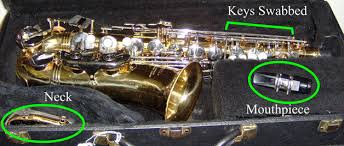Saxophone Hub
The Impact of Humidity on Saxophone Maintenance
The Impact of Humidity on Saxophone Maintenance
Saxophones are delicate instruments that rely on precise craftsmanship to produce their beautiful sound. However, like all musical instruments, saxophones are sensitive to external conditions. One of the most significant environmental factors that can affect the health and performance of your saxophone is humidity. Whether you’re playing in a humid city like Lagos or during the rainy season in Nigeria, humidity can wreak havoc on your saxophone if not properly managed.
In this blog, we’ll explore how humidity affects saxophone maintenance, the risks of moisture exposure, and best practices for protecting your instrument from its damaging effects. If you’re a saxophonist, music school owner, or even a parent of a saxophone player, understanding the importance of humidity control will help ensure your instrument stays in peak condition for years to come.
How Does Humidity Affect Your Saxophone?
Humidity is the amount of water vapor present in the air. While your saxophone is designed to withstand some moisture (e.g., from your breath when playing), excessive humidity can cause a variety of problems. Here’s how high humidity can affect your instrument:
- Pad and Cork Deterioration: The pads on your saxophone are crucial for sealing the tone holes and creating airtight seals. In a humid environment, the pads can absorb moisture, which causes them to swell, softening the material and compromising their effectiveness. Over time, this leads to leaks that make your saxophone difficult to play, especially in higher registers.
- Rusting of Metal Parts: Saxophones are made of brass, which is prone to rust when exposed to moisture. In a highly humid environment, the metal parts of your saxophone, such as springs, screws, and rods, may start to corrode. Rust buildup can lead to mechanical issues, affecting the movement of keys and overall functionality.
- Woodwind Damage: If your saxophone has a wooden body or components (like the neck or mouthpiece), it is especially vulnerable to humidity. Wood can swell, warp, or crack when exposed to excessive moisture, compromising the instrument’s structural integrity and tonal quality.
- Faster Pad Wear and Tear: In humid conditions, your saxophone’s pads may not dry out completely after use. This can cause pads to become soggy or sticky, leading to poor sound production and making it harder to get clean, smooth notes. The constant exposure to moisture can also result in faster deterioration of the pads, meaning more frequent repairs are required.
- Altered Tone and Playability: Excessive humidity can cause your saxophone to sound muffled or out of tune. The changes in pad shape and moisture absorption in the metal and wood components can distort your instrument’s resonance and response, leading to inconsistent tone quality.
Best Practices for Protecting Your Saxophone from Humidity
Managing humidity is essential for maintaining your saxophone’s health and ensuring it performs at its best. Here are the best practices for protecting your instrument from the damaging effects of moisture:
1. Use a Hygrometer to Monitor Humidity Levels
A hygrometer is a small device that measures the level of humidity in your environment. It’s important to keep the humidity in your practice space within a range of 40-60%. Anything higher than that can be detrimental to your saxophone’s condition. If the air is too humid, consider using a dehumidifier to reduce moisture levels and keep your saxophone safe from damage.
2. Store Your Saxophone in a Case When Not in Use
Whenever you’re not playing your saxophone, store it in a protective case. This helps shield it from humidity, dust, and other environmental factors that could cause harm. A well-padded, hard case offers a stable microclimate, keeping your instrument dry and protected from sudden temperature changes that could lead to condensation.
3. Use a Silica Gel Pack
You can further protect your saxophone from humidity by placing a silica gel pack in your case. Silica gel absorbs excess moisture and helps maintain a dry environment around your instrument. This is especially useful if you live in an area with consistently high humidity, such as coastal regions or tropical climates.
4. Clean and Dry Your Saxophone After Each Use
After every practice session or performance, make sure to thoroughly clean and dry your saxophone. Use a soft cloth to wipe down the body and remove any moisture that may have accumulated. Be sure to swab out the inside of the saxophone, as moisture can build up inside, especially after extended playing. Keeping the saxophone dry is key to preventing pad and cork deterioration.
5. Invest in a Humidity-Controlled Storage Unit
If you live in an area with extremely high humidity or fluctuating weather conditions, you may want to consider investing in a humidity-controlled storage unit or a humidifier. These devices maintain a constant humidity level, ensuring that your saxophone is protected from moisture while you’re not using it. This is an especially great investment for musicians who have multiple instruments or those living in areas with erratic weather.
6. Regularly Check for Signs of Moisture Damage
Even with the best precautions, it’s important to inspect your saxophone regularly for any signs of moisture-related damage. Check the pads for swelling or dampness, inspect the metal parts for rust or corrosion, and look for cracks or warping in the wood. Catching these issues early can save you from costly repairs in the future.
When Should You Get Your Saxophone Repaired Due to Humidity Damage?
Even with regular care, humidity can still cause damage over time, and you might need professional repair services. If you notice any of the following signs, it’s time to take your saxophone to an expert for repairs:
- Sticky or leaky pads: If your pads feel soft or are not sealing the tone holes properly, moisture has likely caused damage. This affects your saxophone’s sound and performance.
- Rust or corrosion on metal parts: If you see rust forming on the springs, screws, or rods, it’s time for professional maintenance to remove the rust and restore the parts.
- Cracked or warped wood: If the wooden components of your saxophone show signs of cracking or swelling, it can lead to serious long-term damage and should be addressed immediately.
- Muffled or inconsistent sound: If your saxophone sounds different or is difficult to play due to humidity, a technician can diagnose the issue and restore the tone quality.
Contact Us for Professional Saxophone Repairs in Nigeria
At Horns Engineer, we specialize in saxophone repairs and maintenance, including repairs caused by humidity damage. Our team of experienced technicians can restore your instrument to its optimal performance, no matter the damage. Whether your saxophone is in need of pad replacement, corrosion treatment, or a complete overhaul, we have the tools and expertise to help.
Get in touch with us today! For a free consultation or to schedule your saxophone repair, contact us via WhatsApp at +234-813-540-4292.
Conclusion
Humidity can significantly impact the performance and longevity of your saxophone if not properly managed. By understanding how humidity affects your instrument and following the best practices for maintenance and care, you can prevent damage and ensure your saxophone stays in great condition for years. If you’re experiencing issues related to humidity or need professional repairs, don’t hesitate to contact Horns Engineer for expert service and guaranteed satisfaction.
Protect your saxophone from humidity damage today. Call or message us on WhatsApp at +234-813-540-4292 for a free consultation and the best repair services in Nigeria.
Frequently Asked Questions (FAQs) About Humidity and Saxophone Maintenance
1. How does humidity affect my saxophone?
Humidity can cause significant damage to your saxophone by affecting its pads, corks, and metal parts. Excess moisture can cause pads to swell, leading to leaks, rust on metal components, and even warping or cracking of any wooden parts of your saxophone. Prolonged exposure to high humidity levels can negatively impact your instrument’s tone and playability.
2. What can I do to protect my saxophone from humidity?
To protect your saxophone from humidity, store it in a case when not in use, ideally with a silica gel pack to absorb moisture. You can also invest in a humidifier or a dehumidifier to maintain a consistent humidity level in your practice space. It’s important to regularly clean and dry your saxophone after use, making sure no moisture is left inside.
3. What is the ideal humidity level for my saxophone?
The ideal humidity level for a saxophone is between 40% and 60%. This range helps maintain your instrument’s pads, corks, and metal components in optimal condition. Any humidity level higher than this can increase the risk of moisture-related damage, while too little humidity can cause parts to dry out and crack.
4. Can humidity damage my saxophone permanently?
Yes, if left unchecked, humidity can cause long-term damage to your saxophone. Excess moisture can lead to rust on metal parts, warping of wood (in wooden components), and deterioration of pads and corks. However, regular maintenance, proper storage, and timely repairs can help mitigate permanent damage.
5. How do I know if my saxophone has been damaged by humidity?
Signs that your saxophone may have been damaged by humidity include sticky keys, muffled sound, rust on metal parts, and swollen or soft pads that cause leaks. If you notice any of these issues, it’s important to have your saxophone inspected and repaired by a professional.
6. Can I fix humidity-related damage to my saxophone myself?
While basic cleaning can be done at home, repairing humidity-related damage, such as replacing pads, fixing rusted parts, or addressing warped components, requires professional expertise. It’s best to bring your saxophone to a repair technician who can properly diagnose and repair the damage.
7. How often should I get my saxophone checked for humidity damage?
Ideally, you should have your saxophone inspected at least once a year. However, if you live in a particularly humid climate or if you play your saxophone frequently, more frequent checks are recommended. Regular maintenance will help catch any humidity-related issues early before they cause significant damage.
8. What should I do if I notice rust on my saxophone’s metal parts?
Rust is a common issue caused by humidity. If you notice rust on your saxophone, it’s best to take it to a professional repair shop like Horns Engineer. We will clean and restore the affected parts, ensuring your saxophone functions properly and looks great again.
9. How can I tell if my saxophone needs professional repairs due to humidity damage?
If your saxophone is showing signs of rust, poor tone quality, sticky keys, or leaking pads, it’s time to bring it in for professional repairs. A technician will be able to inspect the instrument thoroughly, clean it, replace damaged parts, and restore it to full playing condition.
10. How can I maintain my saxophone in humid conditions in Nigeria?
In Nigeria’s humid climate, it’s crucial to regularly clean and dry your saxophone after use, store it in a well-padded case with a silica gel pack, and use a dehumidifier or humidifier if needed. Ensuring that your saxophone stays in a consistent, moderate environment will help preserve its condition and performance.
Contact us today! If you have any further questions or need professional saxophone repair, don’t hesitate to reach out via WhatsApp at +234-813-540-4292 for a free consultation.



